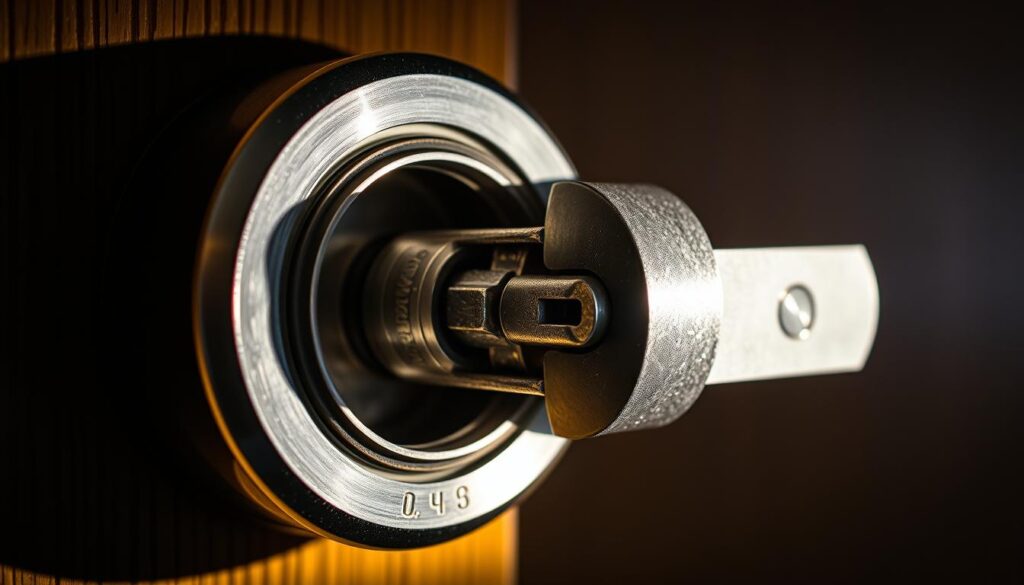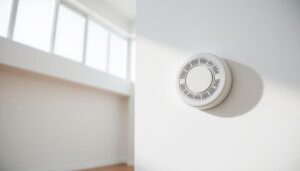Are you aware that a significant number of burglaries in the UK involve lock snapping, a method used to gain silent entry through doors fitted with standard Euro cylinder locks?
In many cases, the preferred point of entry for burglars is a door, with lock snapping accounting for up to 25% of break-ins in some areas. This raises a crucial question: are your home’s doors equipped with the right locks to prevent such incidents?
Standard Euro cylinder locks have become a significant security risk due to their vulnerability to lock snapping. Upgrading to anti-snap cylinders is a highly effective way to bolster your home’s security against modern burglary techniques.
Key Takeaways
- Understand the vulnerabilities of standard Euro cylinder locks and the risks associated with lock snapping.
- Learn how to select the right anti-snap cylinder for your doors.
- Discover the key security standards to look for when purchasing anti-snap cylinders.
- Gain knowledge on installing anti-snap cylinders correctly to maximise your home’s security.
- Enhance your door security with anti-snap technology to potentially prevent costly break-ins.
Understanding Lock Snapping and the Need for Anti-Snap Cylinders
To comprehend the importance of anti-snap cylinders, it’s crucial to understand the mechanism and risks associated with lock snapping. Lock snapping is a technique used by burglars to gain unauthorized access to homes by breaking the lock cylinder.
What is Lock Snapping?
Lock snapping involves applying force to the lock cylinder to break it, allowing the burglar to manipulate the lock’s mechanism and gain entry. This method is preferred by burglars due to its relative ease and the minimal noise it generates.
Why Standard Euro Cylinders Are Vulnerable
Standard Euro cylinders are vulnerable to lock snapping due to their design and material. These cylinders are typically made from materials that can be prone to breaking when subjected to sufficient force, making them an easy target for burglars.
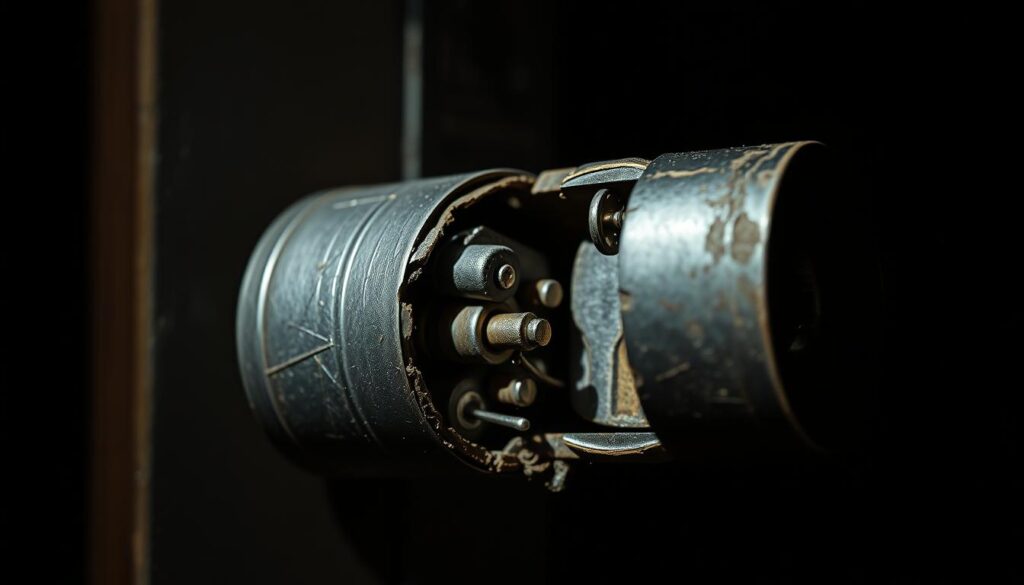
Burglary Statistics in the UK
The UK experiences a significant number of burglaries annually, with door locks being a common entry point. According to the Office for National Statistics, approximately 2 in 100 households experience break-ins each year, with 67% of these incidents involving doors.
- Despite an overall decline in burglary rates since the 1990s, around 2 in 100 UK households still experience break-ins annually.
- Doors remain the primary entry point in 67% of burglaries, with lock manipulation being the preferred method of gaining access.
- Lock snapping accounts for 25-30% of all residential burglaries in some UK areas, such as West Yorkshire and Greater Manchester.
These statistics underscore the need for enhanced security measures, such as anti-snap cylinders, to protect homes against lock snapping and other forms of burglary.
How Anti-Snap Cylinders Work to Protect Your Home
To safeguard your property, it’s essential to understand how anti-snap cylinders work. Anti-snap cylinders are specifically designed to counter the threat of lock snapping, a technique often used by burglars to gain unauthorized access to homes.
The Design Difference Between Standard and Anti-Snap Cylinders
The primary distinction between standard euro lock cylinders and anti-snap cylinders lies in their design. Anti-snap cylinders feature a sacrificial break point, which is engineered to snap off under force, leaving the locking mechanism intact. This is a significant improvement over standard cylinders, which can be easily snapped, rendering the lock useless.
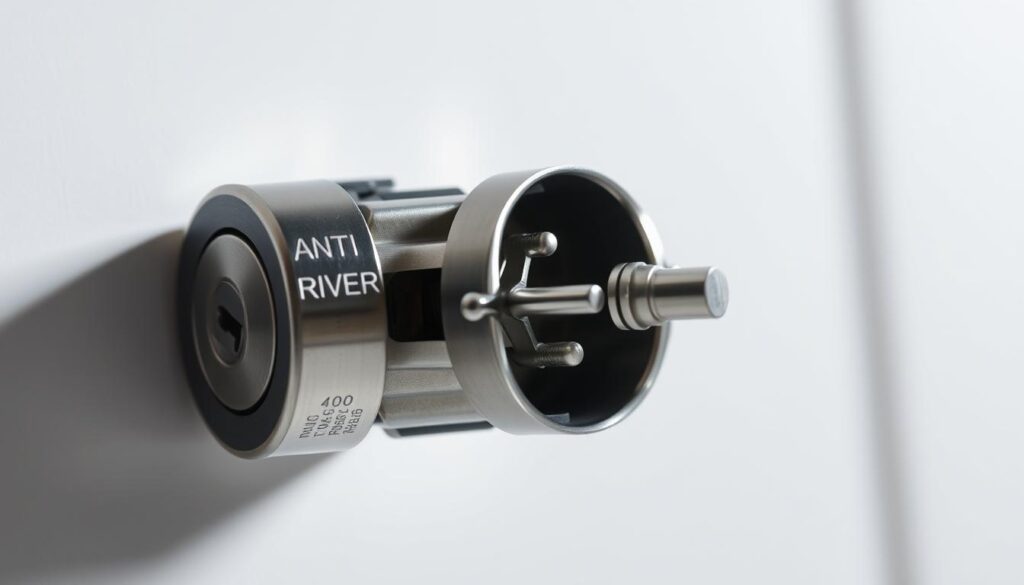
Key Security Features of Anti-Snap Locks
Anti-snap locks, such as the Mul-T-Lock Breaksure3DS, boast several key security features. These include:
- Drill-resistant pins or plates to prevent drilling attacks.
- Anti-bump, anti-pick, and anti-extraction features for comprehensive security.
- Restricted key systems for enhanced key control.
- Flush-mounted design to prevent gripping tools from being used.
| Security Feature | Description | Benefit |
|---|---|---|
| Sacrificial Break Point | Engineered to snap off under force | Locking mechanism remains intact |
| Drill-Resistant Pins/Plates | Made from hardened steel | Prevents drilling attacks |
| Restricted Key System | Duplicate keys made only by authorized locksmiths | Enhanced key control |
By incorporating these advanced security features, anti-snap cylinders provide a robust defense against various forms of attack, ensuring your home remains secure.
Security Standards for Anti-Snap Cylinders
To effectively protect your home, it’s essential to be aware of the security standards that anti-snap cylinders must meet. These standards ensure that the cylinders are designed and manufactured to provide maximum security against lock snapping and other forms of tampering.
SS312 Diamond Standard Explained
The SS312 Diamond Standard is a certification that indicates a lock cylinder’s resistance to various forms of attack, including lock snapping. This standard is part of the British Standards Institution (BSI) PAS 24:2012 specification, which outlines the requirements for security against lock snapping. A cylinder that meets the SS312 Diamond Standard has been rigorously tested to ensure its durability and security features.
TS007 Star Rating System
The TS007 Star Rating System is another critical standard for evaluating the security of lock cylinders. This system rates cylinders from 1 to 3 stars based on their resistance to lock snapping. A 3-star rating indicates the highest level of security. The rating system helps consumers make informed decisions when selecting lock cylinders for their homes.
Combining Security Features: 1-Star Cylinders with 2-Star Furniture
While a 3-star cylinder provides comprehensive protection, an alternative approach is to combine a 1-star euro lock cylinder with 2-star approved door furniture. This combination can achieve the same level of security as a single 3-star cylinder. The 2-star door furniture typically includes reinforced handles or security escutcheons that protect the cylinder from external manipulation.
For optimal protection, both the cylinder and furniture must bear the BSI Kitemark, confirming they have been independently tested to the TS007 standard. When properly installed, this combination provides equivalent protection to a single 3-star cylinder, offering homeowners flexibility in achieving the required security level for their doors.
| Security Feature | Description | Benefit |
|---|---|---|
| 1-Star Cylinder | A basic level of security against lock snapping | Provides a foundational level of protection |
| 2-Star Door Furniture | Enhanced security features such as reinforced handles or escutcheons | Protects the cylinder from external manipulation and snapping |
| BSI Kitemark | Independent testing to the TS007 standard | Ensures the product has been rigorously tested for security |
Choosing the Right Anti-Snap Cylinder for Your Door
>
Enhancing your door’s security starts with selecting the correct anti-snap cylinder. To make an informed decision, you need to consider several factors, including the type of door you have and its specific requirements.
Measuring Your Current Lock Correctly
Accurate measurement of your current lock is crucial before purchasing an anti-snap replacement. For uPVC doors, the thickness can vary significantly, making precise measurement particularly important. You can refer to our guide on Euro cylinder locks for more detailed information.
Types of Anti-Snap Cylinders Available
Different types of anti-snap cylinders are available, catering to various door types. For instance, uPVC doors typically require standard euro cylinders, while composite doors may need longer cylinders due to their thicker profiles.
Considerations for Different Door Types
When choosing an anti-snap cylinder, consider the specific needs of your door type. For example, timber doors fitted with euro cylinders may require cylinders that accommodate additional security features like mortice locks. Similarly, aluminium doors have specific requirements regarding cylinder length and compatibility with the door’s hardware. For patio and French doors, consider whether a thumb-turn option is preferable for easier operation from the inside while maintaining anti-snap protection on the external side.
How to Add Anti-Snap Cylinders to Doors
Securing your door with an anti-snap cylinder is a relatively easy DIY task that offers significant security benefits. This upgrade can be completed with basic tools and a bit of patience.
Tools Required for Installation
To install an anti-snap cylinder, you’ll need a few simple tools: a screwdriver, a measuring tape, and possibly a wrench or pliers, depending on your lock’s design. Having these ready will streamline the process.
Step-by-Step Installation Guide
Installing an anti-snap cylinder involves removing the old cylinder, fitting the new one, and testing the lock.
Removing the Old Cylinder
Start by removing the screws that hold the cylinder in place. Gently pull out the old cylinder, taking care not to damage the lock mechanism.
Installing the New Anti-Snap Cylinder
Insert the new anti-snap cylinder, ensuring it’s properly aligned with the lock’s mechanism. Secure it with the screws you removed earlier.
Testing the New Lock
After installation, test the lock several times to ensure it’s working smoothly and the anti-snap cylinder is functioning as expected.
When to Call a Professional Locksmith
If you encounter any resistance while removing the old cylinder, or if your door has a complex locking system, consider hiring a professional locksmith. The Master Locksmiths Association can help you find a qualified locksmith in your area. Scenarios where a professional is advisable include:
- If you’re upgrading multiple doors to anti-snap cylinders, especially if they need to be keyed alike.
- For elderly or vulnerable homeowners who prefer professional fitting for peace of mind.
- When insurance requirements specify professional installation for policy validity.
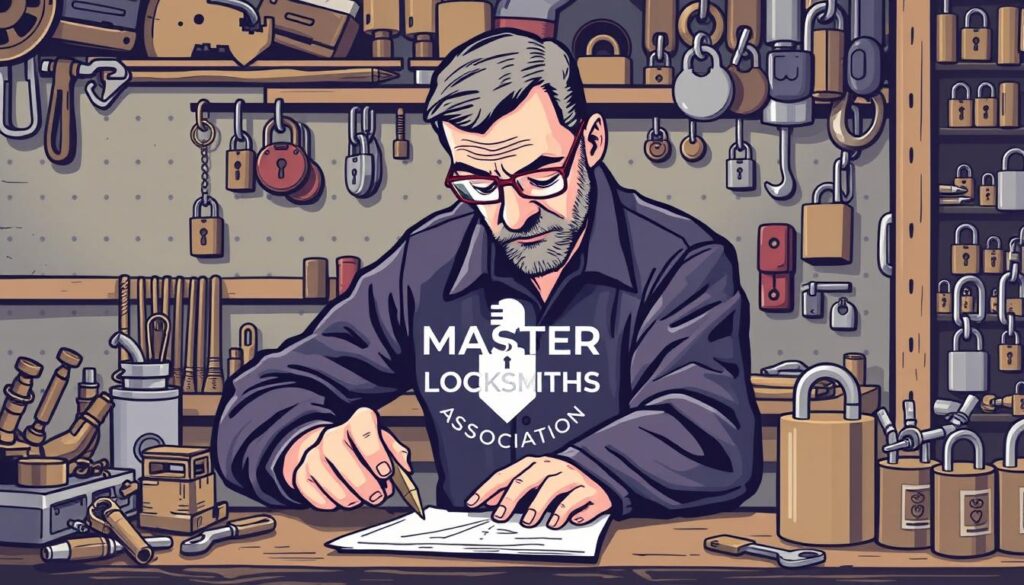
Cost Considerations for Anti-Snap Security
Homeowners often wonder about the cost considerations for anti-snap security when looking to enhance their home’s protection. The cost involves not just the price of the anti-snap cylinders themselves but also the potential savings and benefits they offer.
Price Range of Anti-Snap Cylinders
The cost of anti-snap cylinders can vary, generally ranging from £50 to £80 per cylinder, depending on the brand and security features. When you factor in installation costs, the total can range from £100 to £160 per door.
Professional Installation Costs vs. DIY
While DIY installation can save on labour costs, hiring a professional locksmith ensures that the anti-snap cylinders are installed correctly, maximizing their security benefits. Professional installation costs can vary, but the assurance of proper installation is often worth the expense.
Value for Money and Insurance Benefits
Many insurance companies offer reduced premiums for homes with enhanced security measures, including anti-snap cylinders. The average cost of a home burglary in the UK exceeds £3,000, making the £100-160 investment in anti-snap security excellent value for money. Moreover, the peace of mind that comes with knowing your home is well-protected is invaluable.
| Cost Component | Estimated Cost (£) | Benefits |
|---|---|---|
| Anti-Snap Cylinder | 50-80 | Enhanced security |
| Installation (DIY) | 0 | Cost-saving |
| Installation (Professional) | 50-80 | Expertise and warranty |
| Total Cost | 100-160 | Long-term security investment |
Conclusion: Securing Your Home with Anti-Snap Technology
Enhancing your door’s security with anti-snap technology is a simple yet effective way to safeguard your home. Burglaries can be emotionally traumatising, but anti-snap locks can provide much-needed peace of mind and protection for you and your family.
By upgrading to anti-snap cylinders, you can effectively neutralise the threat of lock snapping, a common burglary technique in the UK. The relatively small investment in anti-snap technology provides disproportionately large returns in security enhancement and peace of mind.
Whether you choose a comprehensive SS312 Diamond certified cylinder or a TS007 3-star rated product, ensuring your doors meet these standards is crucial. For many homeowners, DIY installation is an achievable weekend project. However, professional installation remains an option for those who prefer expert fitting. Remember, home security is only as strong as its weakest point, so consider a comprehensive approach that includes proper door and window locks, lighting, and awareness.
